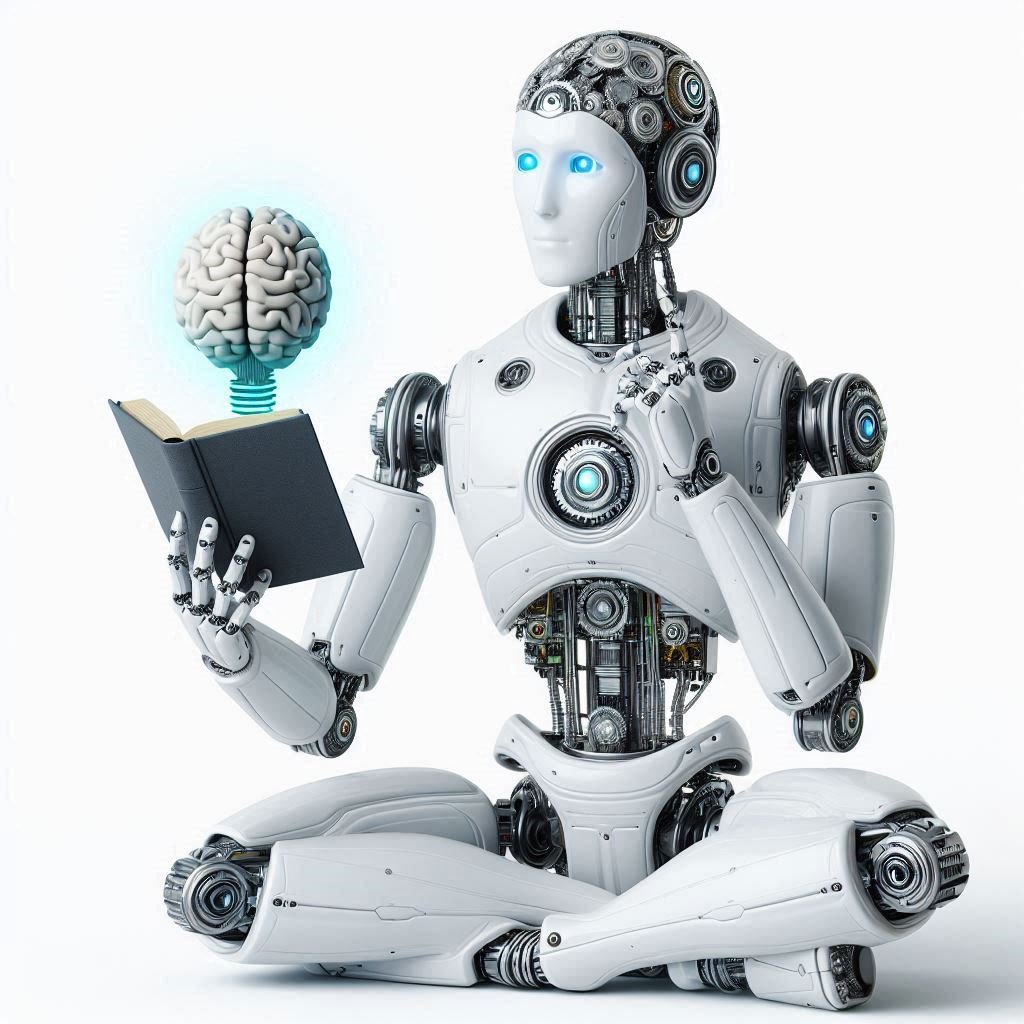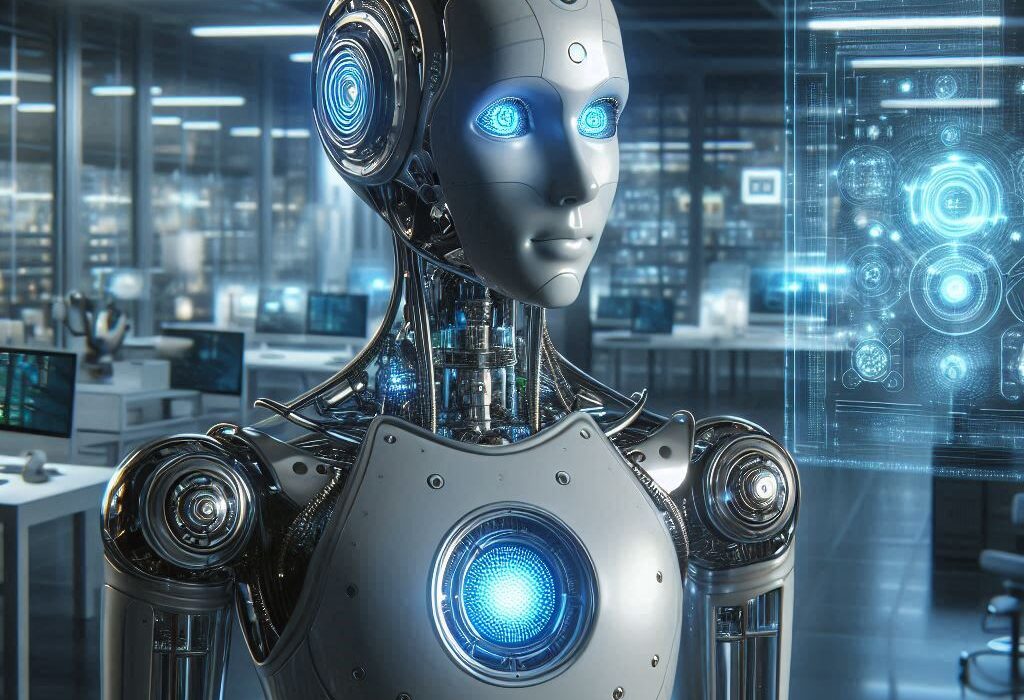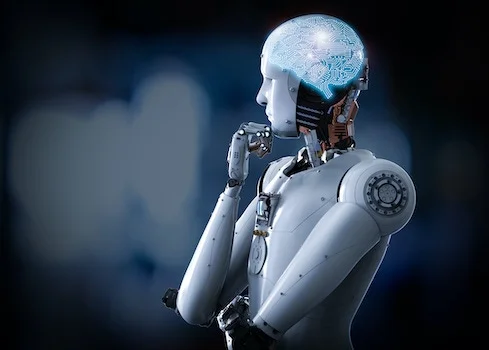It was once a realm reserved for sci-fi novels and silver screens: shimmering cities under glass domes, flying cars gliding through neon skies, and machines that whispered our wishes before we spoke them. Yet here we are, standing on the trembling threshold of a future that seems determined to leap from fiction into the folds of reality.
For centuries, human beings have imagined tomorrow as a realm apart—a shimmering place perpetually “out there.” But the truth is more thrilling, and sometimes more terrifying: the future isn’t coming. It’s already here, unfolding quietly in labs, codebases, and test beds all around us.
This is the story of ten technologies poised to transform our lives—not in some distant century, but in the years and decades immediately ahead. They will reshape economies, rewire societies, and challenge the boundaries of what it means to be human.
Strap in. The future is closer than you think.
Artificial General Intelligence: The Dawn of Digital Minds
In a dimly lit lab, a research scientist speaks softly to a machine. The machine responds—not just with pre-programmed phrases, but with insight, empathy, and humor. It parses subtlety, deciphers sarcasm, and stitches together disparate facts to solve complex problems. This is no ordinary AI. This is the glimmering edge of Artificial General Intelligence, or AGI.
Today, AI can transcribe your voice, recommend your next show, or even generate essays and images. But these systems are specialists—savants confined to narrow tasks. AGI, by contrast, would be a digital polymath: an entity capable of reasoning, planning, and learning across multiple domains, just like a human being.
Experts once predicted AGI lay many decades away, but recent leaps in machine learning suggest the timeline might be shorter than anyone dared hope—or fear. Models are growing exponentially more powerful. They write code, solve physics problems, and converse with uncanny fluidity. They aren’t sentient minds—not yet—but the scaffolding of human-level intelligence is rising fast.
The implications are seismic. Imagine an AI that diagnoses diseases faster than any doctor, engineers new medicines, or advises policymakers with perfect recall of the entire internet. AGI could accelerate scientific discovery by centuries. Yet it also raises profound dangers: job displacement, algorithmic manipulation, and the specter of intelligence slipping beyond our control.
The future of AGI is a razor’s edge between salvation and catastrophe. And we’re rushing along that edge far faster than most people realize.
Quantum Computing: Cracking Reality’s Secret Code
Deep beneath the glassy surface of silicon microchips, electrons flicker in patterns as precise as clockwork. Classical computers crunch through calculations by flipping bits—ones and zeros—in orderly progression. But nature herself is not so neat. Reality, at its most fundamental level, shimmers with uncertainty. And that is precisely where quantum computing emerges.
Quantum computers don’t rely on mere bits. They wield qubits—quantum bits—that exist in superpositions of both one and zero simultaneously. Entanglement allows qubits to share information in ways Einstein once called “spooky action at a distance.” Together, these properties unlock parallelism on an unimaginable scale. A quantum computer can explore vast landscapes of possibilities all at once.
For decades, quantum computing was dismissed as a physicist’s fantasy. But in the past five years, progress has surged. Companies like IBM, Google, and startups like IonQ and Rigetti have built prototype quantum processors. Though still in their infancy—often prone to errors—they’ve proven that quantum advantage is no longer hypothetical.
Why does this matter? Because quantum machines promise to crack problems unsolvable by any classical computer, no matter how powerful. They could revolutionize drug discovery by simulating molecules atom by atom. They might break cryptographic codes that secure the world’s digital infrastructure. They could optimize global logistics, energy grids, and financial portfolios in seconds.
We’re not yet living in a quantum age, but the whispers of it echo ever louder in research labs. The transition from experimental curiosity to practical tool may arrive in the next decade. When it does, it could upend entire industries overnight.
Brain-Computer Interfaces: Thought Into Action
In a sterile surgical suite, a technician gently places a lattice of electrodes on a patient’s cortex. Moments later, the patient—a quadriplegic—moves a robotic arm with nothing but thought. Around the world, similar miracles unfold: people controlling cursors, typing messages, or even feeling sensations through prosthetic limbs.
This is not magic. It is the nascent field of Brain-Computer Interfaces, or BCIs—a technology destined to redefine the boundary between mind and machine.
Today’s BCIs are primitive but astonishing. They record neural signals and translate them into digital commands. But innovators like Elon Musk’s Neuralink are pushing the dream further: high-bandwidth interfaces that not only read from the brain but write to it, restoring sight to the blind, hearing to the deaf, and perhaps even memories to those robbed of them by disease.
Imagine a world where you compose an email simply by thinking the words, or download a new language as effortlessly as installing an app. BCIs could transform education, entertainment, medicine, and human connection itself.
Yet ethical questions loom large. Who controls the data inside your mind? Can memories be manipulated or erased? Could hackers hijack your thoughts?
The frontier of BCIs is closer than it appears. Clinical trials are underway. Investors are pouring in billions. In the span of a single generation, we may slip the tether of our biological limits and merge our minds with machines.
Fusion Energy: Harnessing a Star on Earth
For decades, scientists have chased a radiant dream: to bottle the fire of the sun.
Fusion energy promises a world free from fossil fuels—a limitless supply of clean power with no carbon emissions and no long-lived radioactive waste. It’s the holy grail of physics. Yet for nearly a century, fusion has hovered on the horizon, perpetually “30 years away.”
But something has changed.
In December 2022, researchers at the National Ignition Facility in California achieved a historic milestone: a fusion reaction that produced more energy than it consumed. Though tiny and fleeting, it shattered a psychological barrier. Elsewhere, private companies like Commonwealth Fusion Systems and Tokamak Energy are racing to build compact reactors using advanced magnets and AI-driven designs.
Fusion could deliver gigawatts of clean electricity, desalinate oceans, and power high-speed trains across continents. It could render oil and coal obsolete and stave off the worst impacts of climate change.
Challenges remain monumental: engineering, cost, materials science. But after a century of false starts, humanity may be on the cusp of igniting a star right here on Earth.
Nanomedicine: The Age of Molecular Doctors
In the sterile corridors of a cancer ward, doctors wage war against tumors with chemotherapy—a blunt, scorched-earth strategy that often ravages healthy cells alongside malignant ones. But imagine a different approach: armies of molecular machines swimming through your bloodstream, targeting diseased cells with surgical precision, leaving healthy tissue untouched.
Welcome to nanomedicine—the science of healing from the inside out.
Researchers are engineering nanoparticles that home in on cancer cells, delivering toxins precisely where they’re needed. Others design nanorobots that unclog arteries, fight infections, or repair damaged tissues molecule by molecule.
Already, clinical trials are underway. Some nanoparticles enhance imaging, illuminating tumors so surgeons can excise them with exquisite accuracy. Others carry genetic cargo to edit faulty DNA, offering cures for diseases once deemed untouchable.
Nanomedicine could transform health care from reactive to proactive. In the not-so-distant future, annual checkups might include scans for microscopic invaders, detected and neutralized before symptoms ever appear.
Yet with this power comes risk. How do we ensure nanobots don’t trigger immune reactions? How do we regulate devices invisible to the naked eye?
The microscopic frontier is opening. Medicine may soon shrink to the scale of atoms—and deliver miracles once beyond imagination.
Synthetic Biology: Rewriting Life Itself
Somewhere in a gleaming biotech lab, a scientist taps a keyboard, arranging strands of DNA as easily as writing text. She presses “print,” and a machine churns out a custom genetic sequence. The organism that emerges can devour oil spills, produce vaccines, or glow under ultraviolet light.
This is synthetic biology—the art of designing life from scratch.
Where traditional biotechnology edits existing genes, synthetic biology builds entirely new biological systems. It’s the fusion of computer science, engineering, and biology—a discipline where genes are treated as circuits, cells as programmable factories.
Already, synthetic biologists have crafted bacteria that produce insulin, yeast that brew rare scents and flavors, and crops resistant to drought. They’ve synthesized viruses like polio purely from digital blueprints—a feat both thrilling and terrifying.
The potential is vast: carbon-eating microbes that scrub greenhouse gases from the air; plants that light streets instead of electric bulbs; new materials stronger than steel, lighter than air.
But the power to write life carries dark echoes. Biohackers could build pathogens with devastating effects. Nations are scrambling to devise biosecurity frameworks before the technology outpaces oversight.
The code of life is becoming a digital language we can edit at will. We stand on the brink of a future where biology is not just discovered—but designed.
Space Habitats: Earth’s Off-World Outposts
In the inky darkness above our heads, a revolution is unfolding. Where once only governments dared venture, private companies now launch rockets weekly, ferrying satellites, tourists, and cargo to the stars.
Yet space travel is only the beginning. Humanity’s eyes are turning toward settlement—building permanent homes beyond Earth.
Space habitats are no longer just concepts in artists’ renderings. NASA’s Artemis program aims to establish a lunar base. China and Russia plot their own moon missions. Meanwhile, private ventures like SpaceX envision Mars colonies with thousands of settlers.
Engineers are developing inflatable habitats, radiation shielding, and closed-loop life-support systems that recycle air, water, and waste. Companies like Blue Origin propose O’Neill cylinders—vast rotating space stations where cities float under artificial gravity.
The motivations are compelling. Space habitats could ensure humanity’s survival if catastrophe strikes Earth. They could unlock mineral riches from asteroids and expand human civilization into the cosmos.
Yet the challenges are herculean: cosmic radiation, micrometeorites, muscle atrophy in low gravity, the psychological toll of isolation. And then there’s cost—a single kilogram launched to orbit can still run tens of thousands of dollars.
Nonetheless, each rocket launch inches us closer. The first children born on another world may already be alive today.
Hyper-Personalized Medicine: The End of One-Size-Fits-All
Picture walking into a doctor’s office. Instead of generic advice, you receive a treatment plan tailored to your unique genetic code, environment, and microbiome. Your medication dosage is calibrated precisely for how your body metabolizes drugs. Diseases are detected years before symptoms arise.
This is the promise of hyper-personalized medicine—a revolution powered by genomics, big data, and AI.
The human genome cost billions to decode in 2003. Today, you can sequence your DNA for less than the price of a smartphone. These genetic blueprints reveal predispositions to cancer, heart disease, and countless conditions. Coupled with wearable devices tracking your heart rate, sleep patterns, and even blood chemistry, doctors can predict health trajectories with unprecedented precision.
Pharmaceutical companies are developing targeted therapies that bind to specific genetic mutations. Immunotherapies unleash your own immune system on tumors. In some trials, CRISPR gene-editing has corrected inherited diseases at their root.
Hyper-personalized medicine could mean longer, healthier lives. But it raises ethical dilemmas. Who owns your genetic data? Could insurers discriminate based on your DNA? Will cutting-edge therapies be reserved for the wealthy?
Nevertheless, the march toward precision medicine accelerates. In a decade, generic prescriptions may seem as archaic as bloodletting.
Virtual and Augmented Reality: New Worlds Unfold
A woman dons a sleek headset. In seconds, she’s standing on the summit of Mount Everest, wind whipping her virtual hair. Moments later, she’s in a simulated operating room, honing her skills as a surgeon without risking real patients.
Virtual Reality (VR) and Augmented Reality (AR) are transforming how we work, play, and learn. VR immerses us completely in synthetic worlds. AR overlays digital information onto the physical world—a heads-up display for everyday life.
Though VR has existed for decades, only recently has technology caught up with the dream. Lightweight headsets, high-resolution displays, and haptic feedback are erasing the seams between real and virtual. Meta (formerly Facebook), Apple, and countless startups are battling to build the next frontier of human experience: the metaverse.
Education could become immersive, allowing students to explore ancient Rome or the inner workings of a cell. Architects can walk clients through virtual buildings before laying a single brick. Therapists treat phobias in safe, controlled simulations. Soldiers train for combat in hyper-realistic digital landscapes.
But there are shadows. VR can isolate as much as it connects. And digital environments could become platforms for manipulation, disinformation, or addiction.
Still, the momentum is unstoppable. Soon, “going online” may mean stepping into worlds as vivid as the one outside your window.
Autonomous Systems: The Rise of Self-Driving Everything
On a quiet highway at dawn, a sleek car glides along with no human hands on the wheel. Its sensors scan the road, anticipating obstacles, adjusting speed, navigating with uncanny precision. It’s not just a self-driving car—it’s a glimpse into a future where machines move through the world on their own.
Autonomous systems are leaping from the pages of science fiction into everyday life. Drones deliver medical supplies across rural Africa. Warehouse robots ferry goods with tireless precision. Agricultural robots sow seeds and harvest crops, slashing labor costs and environmental impact.
Yet the prize remains fully autonomous vehicles. Tesla, Waymo, Cruise, and countless others are locked in a race to perfect driverless cars. Billions of dollars flow into lidar sensors, neural networks, and regulatory battles. The transition will be gradual: highways first, urban streets later.
If successful, autonomous vehicles could save millions of lives lost to human error, eliminate traffic jams, and grant mobility to the elderly and disabled. Trucking may become 24/7, with machines hauling freight across continents while drivers sleep.
But it’s not simple. Machines must handle blizzards, ethical dilemmas, and unpredictable humans. Who is liable when a robot car crashes? What happens to millions of driving jobs?
The age of autonomous machines is no longer a question of “if,” but “when.” We are on the brink of ceding the wheel—and perhaps much more—to our silicon creations.
An Unfolding Future
We stand, breathless, at the cusp of a future once considered pure fantasy. Technologies we glimpsed only in the glow of movie screens are clawing their way into our daily lives. Each new discovery carries the power to uplift or destroy, liberate or enslave.
Will we unlock infinite clean energy or unleash environmental catastrophe? Will artificial intelligence elevate human potential—or replace us? Will we colonize the stars or vanish before we ever leave Earth’s cradle?
These questions aren’t merely scientific—they’re profoundly human. The choices we make today will ripple through generations, sculpting the world our children inherit.
One thing is certain: the future is arriving faster than anyone imagined. It’s closer than you realize. And the story of how it unfolds… is up to us.






